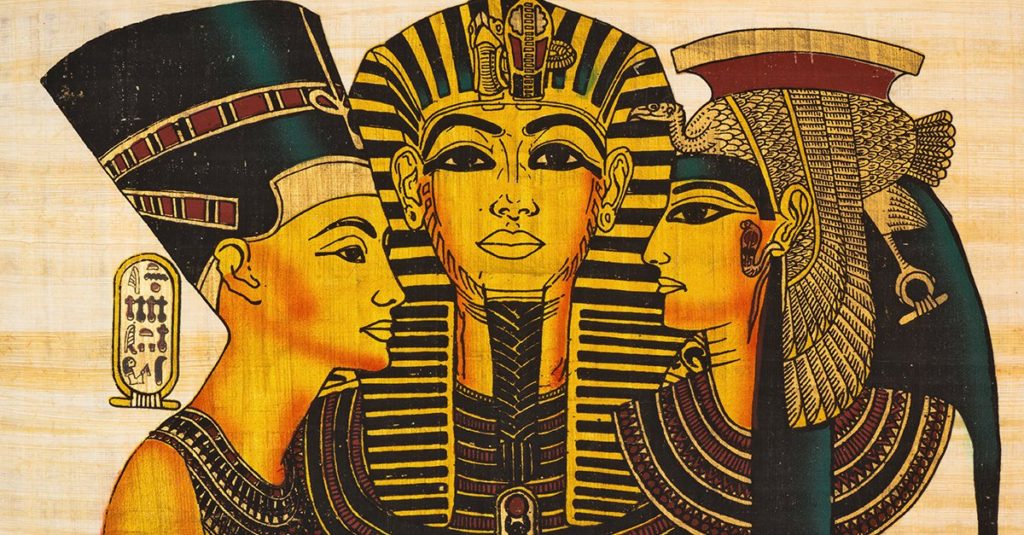Table of Contents
MUMMIES
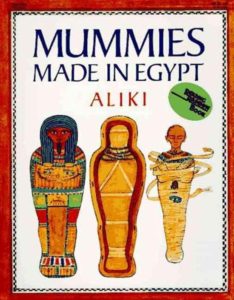
|
Aliki’s Mummies Made in Egypt (HarperCollins, 1985) is a picture-book account of ancient Egyptian religious beliefs and the mummification process, illustrated with delightful detailed little drawings. For ages 4-8. |
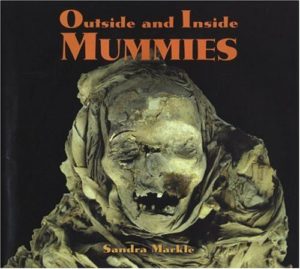
|
Sandra Markle’s Outside and Inside Mummies (Scholastic, 2006) – illustrated with fabulous (if somewhat creepy) color photographs – discusses how mummies are made, the modern technologies used by forensic archaeologists to study mummies, and what their research reveals. Fascinating for ages 8 and up. |
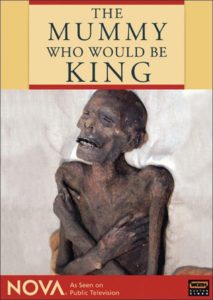
|
NOVA’s The Mummy Who Would Be King explores whether a neglected mummy found on a museum shelf might be the remains of long-lost King Ramses I. Included at the website are a gallery of mummies, an audio slide show on the mummification process, resource lists, a program transcript, and a seven-page teacher’s guide with activities. |
| From the San Francisco Exploratium, Make a Mummy is a hands-on project in which kids mummify a fish using baking soda. | |
| The Brooklyn Museum’s Mummy Chamber site includes a video of a mummy undergoing a CAT scan and an explanation of the results. | |
| Chicken Mummies has complete instructions for mummifying a chicken. (If you’re not into chicken, try Apple Mummies.) | |
| From the Kids Activities blog, Let’s Mummify Barbie has instructions for sending Barbie into the afterlife, complete with death mask, sarcophagus, and canopic jars. | |
| SimMummy is an elaborate hands-on mummification simulation in which kids create a royal mummy (with a potato and an orange), make canopic jars and amulets, design a copy of the Egyptian Book of the Dead, design a Senet game (for the mummy’s afterlife entertainment), and make a sarcophagus and funeral mask. |
KINGS AND QUEENS
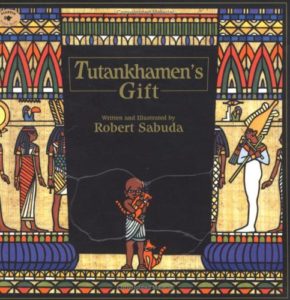
|
Robert Sabuda’s magnificently illustrated picture book, Tutankhamen’s Gift (Aladdin, 1997) is the story of the boy who became pharaoh at the age of ten and spent much of his short reign repairing the temples destroyed by his older brother. The artwork – on handmade papyrus – is extraordinary. For ages 6-9. |
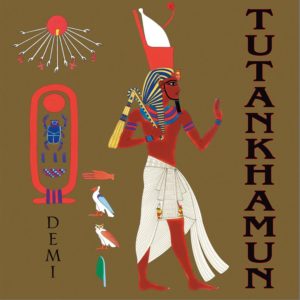
|
Demi’s exquisitely illustrated Tutankhamun (Two Lions, 2009) is the story of the life and times of the young pharaoh, ending with the discovery of his tomb by Howard Carter. Included are a map and an illustrated family tree. For ages 8 and up. |
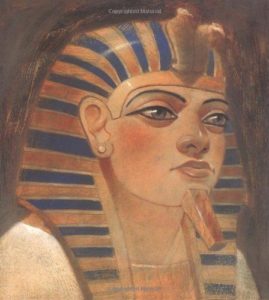
|
Catherine M. Andronik’s picture-book biography Hatshepsut, His Majesty, Herself (Atheneum, 2001) is the story of Egypt’s only successful female pharaoh, who routinely wore a false beard and referred to herself as “he.” Infuriatingly, it’s out of print – check used-book stores and the public library. For ages 7-10. |
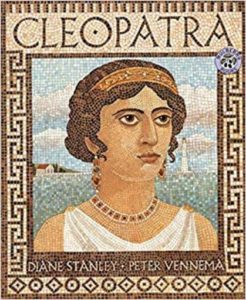
|
By Diane Stanley, with marvelous illustrations by Peter Vennema, Cleopatra (HarperCollins, 1997) is an absorbing biography of the brilliant young queen who charmed Julius Caesar and Mark Antony. For ages 7-11. |
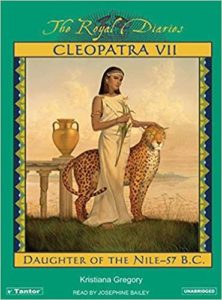
|
In the Royal Diaries series, Kristiana Gregory’s Cleopatra VII: Daughter of the Nile, 57 BC (Scholastic, 1999) is Cleopatra’s story as told through the diary that she (supposedly) kept between the ages of 12 and 14. Endnotes explain what happened in later years. For ages 9 and up. |
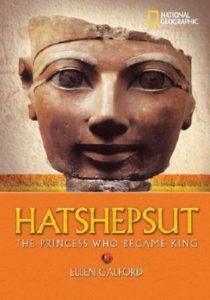
|
By Ellen Galford, Hatshepsut: The Girl Who Became a Great Pharaoh (National Geographic, 2007) is an illustrated biography of the only female pharaoh for ages 9-12. |
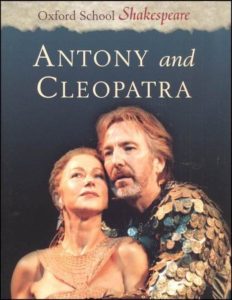
|
Shakespeare’s play Antony and Cleopatra – the tragedy that ends with suicide by asp – is available in many editions; the entire text is online here. |
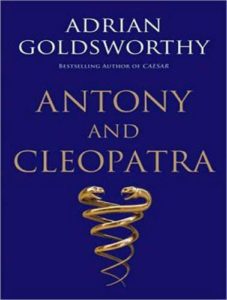
|
Adrian Goldsworthy’s Antony and Cleopatra (Yale University Press, 2010) is a dual biography, putting the famous lovers in political and historical context. The true story, beginning with the fact that Cleopatra was not Egyptian, but Greek. For older teenagers and adults. |
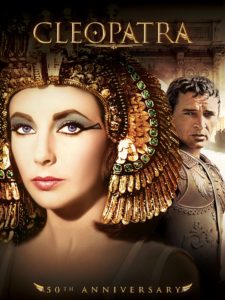
|
The film Cleopatra (1963) stars Elizabeth Taylor in the title role, with Richard Burton as Mark Antony and Rex Harrison as Julius Caesar. Reasonably historical and spectacular to look at. Rated G, which may be stretching it a bit. |
| From Smithsonian magazine, Who Was Cleopatra? discusses mythology, propaganda, Liz Taylor, and the real Queen of the Nile. | |
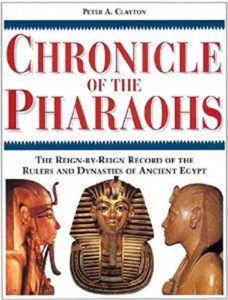
|
Peter A. Clayton’s detailed The Chronicle of the Pharaohs (Thames & Hudson, 2006) is a heavily illustrated reign-by-reign account of all the pharaohs and dynasties of ancient Egypt in chronological order. In the same series, see Joyce Tyldesley’s The Chronicle of the Queens of Egypt. |
THE NILE
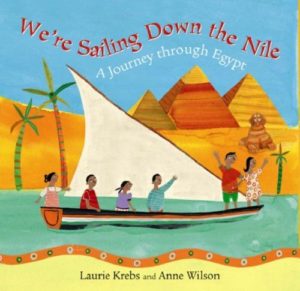
|
In Laurie Krebs’s We’re Sailing Down the Nile (Barefoot Books, 2008), written in cheerful rhyming couplets, a group of kids sails down the Nile River, taking in all the wonderful sights along the way, among them pyramids, temples, and the Sphinx. An Egyptian travelogue for ages 4-8. |
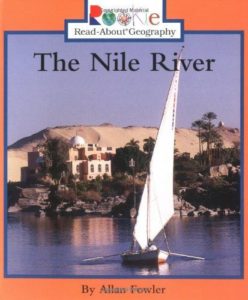
|
Allan Fowler’s The Nile River (Children’s Press, 2000) is a simple photo-illustrated introduction to the world’s longest river for ages 4-7. (Find out what a delta is.) |
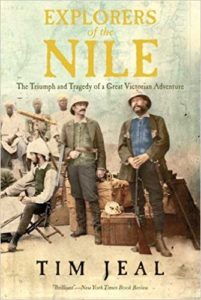
|
Tim Jeal’s Explorers of the Nile (Yale University Press, 2012) is the story of the mid-19th-century quest for what was then “the planet’s most elusive secret” – the source of the Nile River. (Alexander the Great was curious about it; the Emperor Nero sent a couple of centurions in search of it; and a common Roman proverb – referring to something difficult to perform – was “It would be easier to find the source of the Nile.”) Six major expeditions set out in search of it in the mid-1800s, including one led by Dr. David Livingstone (subsequently pursued by Henry Stanley). For teenagers and adults. |
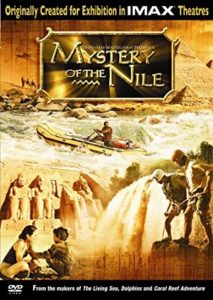 |
Mystery of the Nile is the story of a team of scientists who set out in 2004 to be the first to travel the entire length of the river. |
